Part Number: DS280DF810
Tool/software:
In TI's DS2x0DFx10 Ethernet retimer devices, there is a Version ID register that can be used to read back the device version. For groups implementing this device, we frequently see them checking this Version ID to confirm that the DS2x0DFx10 is correctly installed in their system and responding.
Sometimes, TI receives questions about why the Version ID is not matching expectations. The primary cause for this is that some DS2x0DFx10 devices have multiple valid Version IDs. For example, the DS280DF810 has valid Version IDs of 0x30 or 0x31.
The table below is an excerpt from the DS2x0DFxx0 Programmer's Guide. This shows valid Version IDs for multiple 25G/28G retimer devices. For the latest set of Version IDs, please reference the DS2x0DFxx0 Programmer's Guide.

Part Number: DS110DF111
Tool/software:
Texas Instruments has a wide range of signal conditioning devices for Ethernet.
Sometimes we receive questions regarding a signal conditioning device's ability to support Base-T Ethernet. The majority of TI's Ethernet signal conditioning portfolio only supports NRZ signaling. The exception to this (at the time of writing) are the DS560xxxxx devices, which support NRZ and PAM4 signaling.
Base-T Ethernet uses different signaling levels than those supported by TI's Ethernet signal conditioning devices. The devices below are unable to support signal conditioning for Base-T Ethernet protocols such as 1GBase-T, 2.5GBase-T, and 10GBase-T.
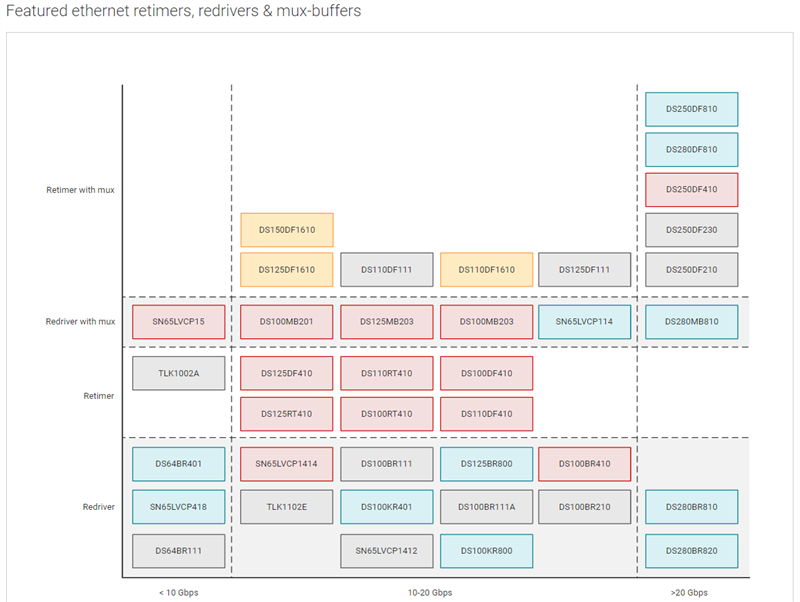
Please see TI's Ethernet Signal Conditioning portfolio to review support for other Ethernet protocols.
https://www.ti.com/interface/ethernet/retimers-redrivers-mux-buffers/overview.html
Part Number: TDP1204
Tool/software:
Most redrivers and retimers advertise their equalization capabilities in dB but its difficult to quantify what that represents in terms of cable length. This FAQ is a guide to determine how long of a cable can be supported by a signal conditioner.
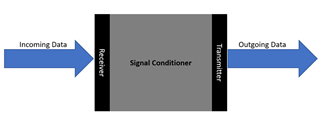
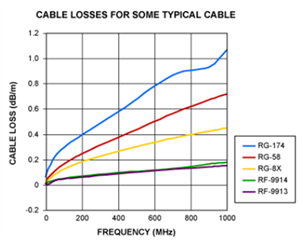
Part Number: TUSB8042A
Tool/software:
When the SMBus interface mode is enabled, the TUSB804x supports read block and write block protocols as a receiver-only SMBus device.
The TUSB804x will wait indefinitely for configuration by the SMBus host and will not connect on the upstream port until the SMBus host indicates configuration is complete by clearing the CFG_ACTIVE bit.
CFG_ACTIVE bit is on register 0xF8h.
Best
Brian
Part Number: TUSB8041A
Tool/software:
In I2C mode, Hub is master and I2C is used to read / write external EEPROM . Hub configuration can be changed by reading external EEPROM
In SMBUS mode, hub is receiver, you can change hub configuration by changing hub register with SMBUS.
Best
Brian
Part Number: DS320PR810
Tool/software:
Why do we need to consider thermal vias and solder paste for redrivers at the board layout stage, and how should they be handled?
Part Number: LMH1229
Tool/software:
To understand the overall jitter measurement it is important to understand what jitter is. All system jitter measurements have components of Deterministic Jitter (DJ) and Random Jitter (RJ) that sum to make the Total Jitter (TJ). DJ is the amount of jitter that is certain to the system, it is predictable and repeatable, so no matter how long the system is running the DJ will stay the same. RJ is random and increases exponentially with time. RJ causes all eyes to close if the system is left on forever, but that is not useful to engineers because we do not live forever. So, it is essential that we make a common threshold for the transmitted bits. A common threshold for measurement is 1E12 bits.
Now into the jitter measurements we can take. The first is the Time Interval Error (TIE). The TIE is the amount of time that the actual bit transition strays from the expected position for transition. The TIE can be displayed in a gaussian (normal) distribution histogram.
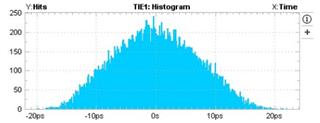
As the distribution moves further and further from the mean and towards the 3 sigma and -3 sigma regions of the distribution, the number of hits strongly decreases. A useful component of the TIE histogram is that the width of the histogram in ps shows the density of the transition point of the eye diagram.
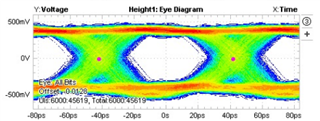
Notice how the width of the transition point for the eye diagram is the same as the width of the histogram ~40 ps.
Another measurement is the BER bathtub. The bathtub is a visualization tool for the TJ's effect on the eye closure. As the number of bits increases from one, the eye closure increases as RJ increases.
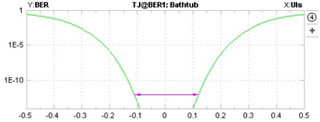
Notice that at 1E12 bits the eye is closed by ~0.8 UI which is 67 ps of closure for 12G SDI.
With these three components of measurement it is possible to visualize the effects of jitter on eye closure. The jitter directly corresponds to the horizontal shrinkage of the eye diagram.
Best Regards,
Nick
Part Number: TUSB211A
Tool/software:
I am enabling my TUSB211A while running test packets through our setup, but I am not seeing any boost. Why is that?
Part Number: TMUXHS221
Tool/software:
I want to mux signals with a range of bandwidths equal to or lower than USB3.0 data rates without getting a full USB3 mux. What would be the best mux for this?
Part Number: TUSB1002A
Tool/software:
Hi Experts,
How do I pass USB3 RX JTOL compliance with the TUSB1002A?